Introduction to MLflow Model Registry
Introduction to MLflow

Weston Bassler
Senior MLOps Engineer
Model lifecycle
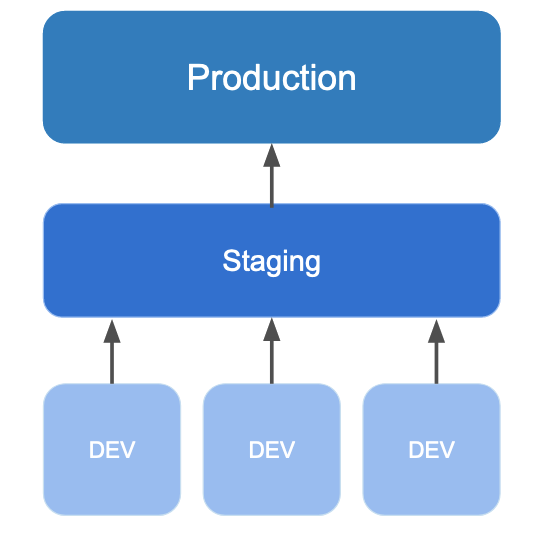
MLflow Model Registry
Centralized storage location
Lifecycle management
- Web UI
- MLflow Client module
- Model versions
- Model stages
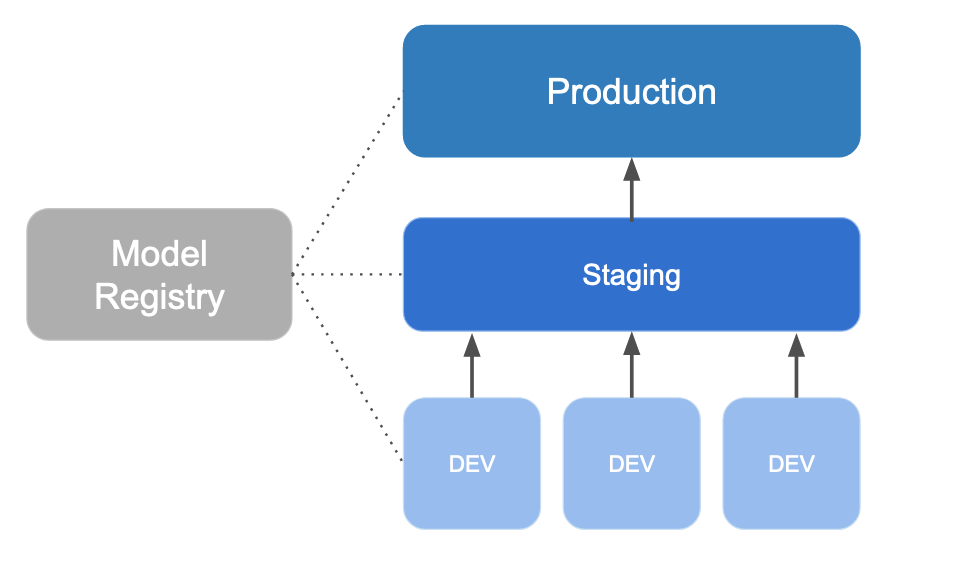
MLflow Model Registry
Model
- Model logged to MLflow Tracking
Registered Model
- Obtains version
- Stage eligible
MLflow Model Registry
Model Version
- Increments with each new registered model
Model Stage
- Can be assigned one of:
- None
- Staging
- Production
- Archived
- Can be assigned one of:
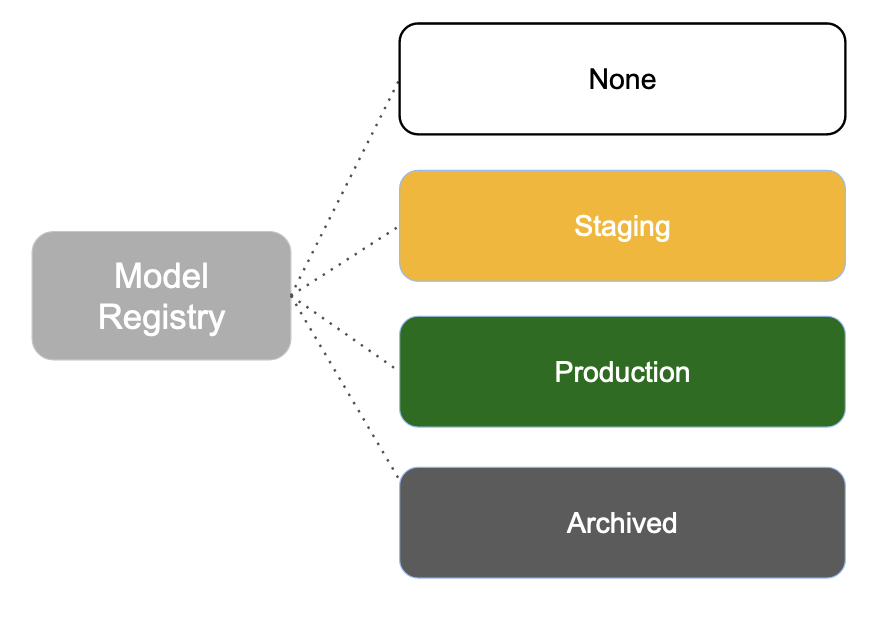
Working with the Model Registry
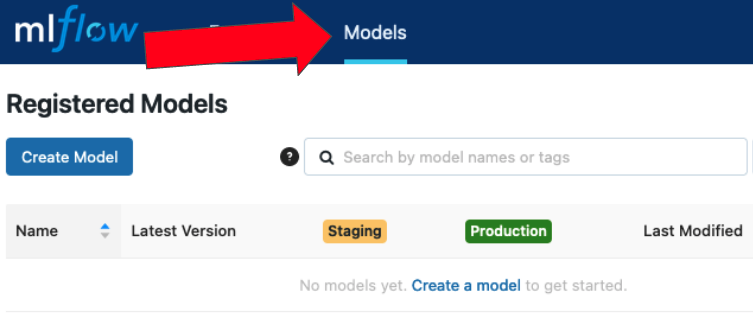
MLflow Client module
Experiments
Runs
Model Versions
Registered Models

1 Flaticon.com
Using MLflow client module
# Import from MLflow module from mlflow import MlflowClient# Create an instance client = MlflowClient()# Print the object client
<mlflow.tracking.client.MlflowClient object at 0x101d55f30>
Registering a model
# Create a Model named "Unicorn"
client.create_registered_model(name="Unicorn")
<RegisteredModel: creation_timestamp=1679404160448, description=None,
last_updated_timestamp=1679404160448, latest_versions=[], name='Unicorn',
tags={}>
Model UI
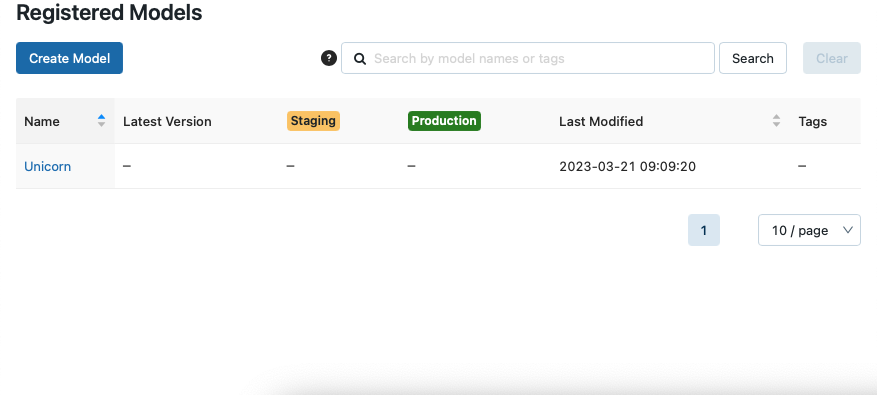
Searching registered models
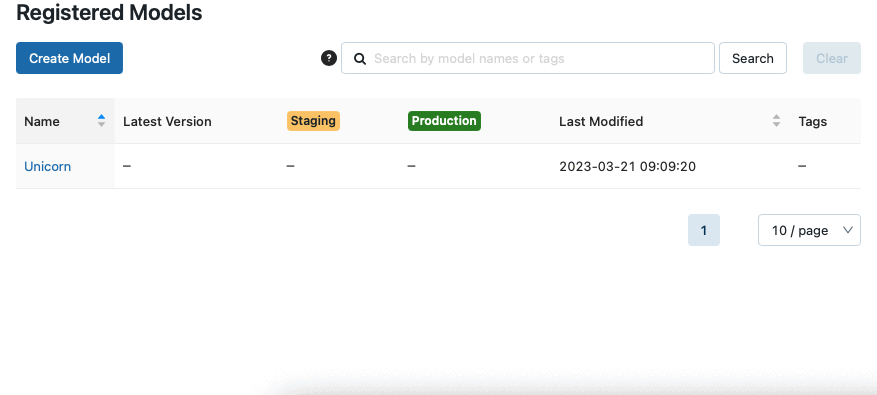
Searching registered models
# Search for registered models
client.search_registered_models(filter_string=MY_FILTER_STRING)
- Identifiers
- name - of the model
- tags - tags associated with model
- Comparators
=- equal to!=- not equal toLIKE- case-sensitive pattern matchILIKE- case-insensitive pattern match
Example search
# Filter string unicorn_filter_string = "name LIKE 'Unicorn%'"# Search models client.search_registered_models(filter_string=unicorn_filter_string)
[<RegisteredModel: creation_timestamp=1679404160448, description=None,
last_updated_timestamp=1679404160448, latest_versions=[], name='Unicorn',
tags={}>,
<RegisteredModel: creation_timestamp=1679404276745, description=None,
last_updated_timestamp=1679404276745, latest_versions=[], name='Unicorn 2.0',
tags={}>]
Let's practice!
Introduction to MLflow

